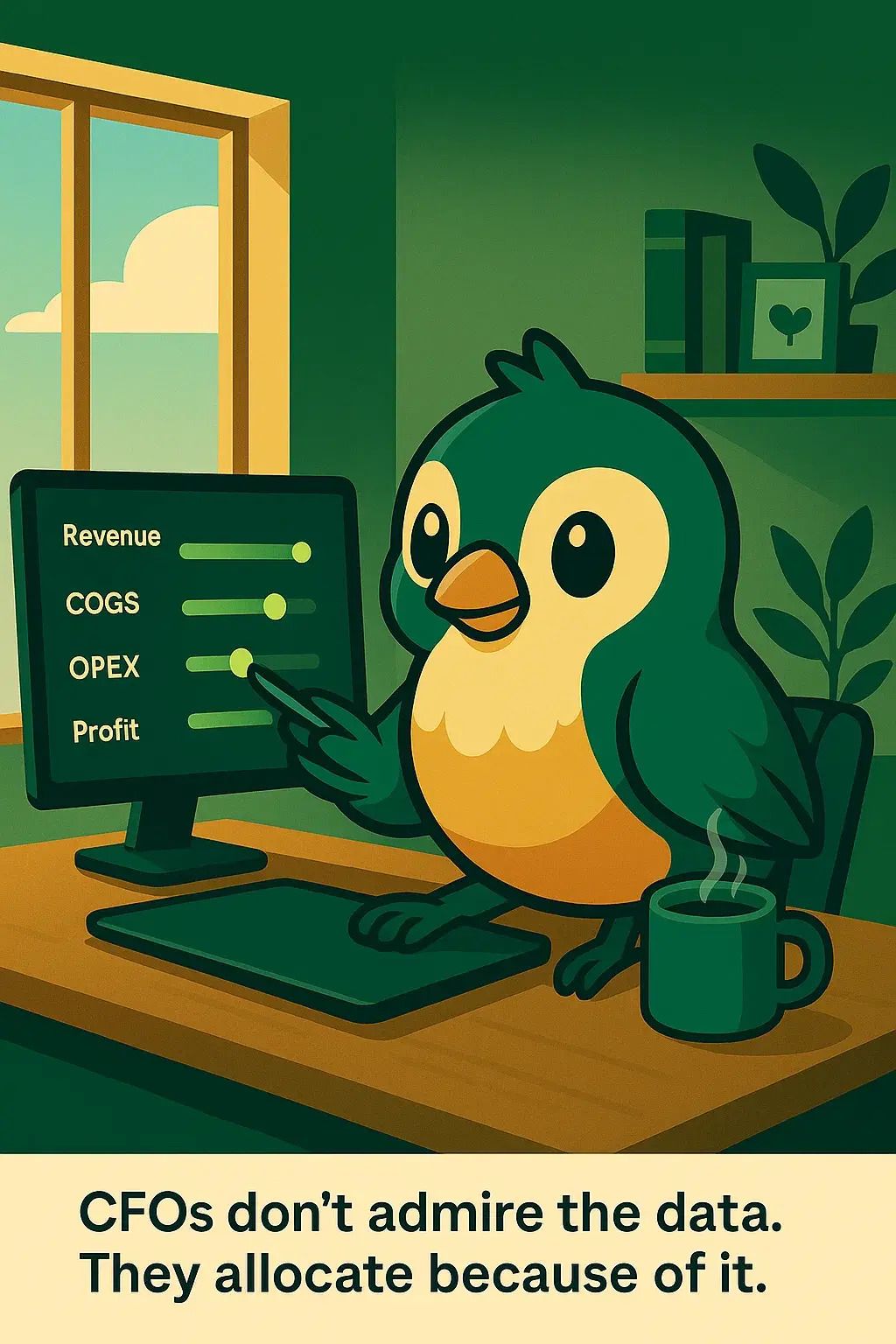
Was this email forwarded to you? Sign up here!
What the P&L Is Really Telling You
Every line on your P&L points to one question: “What should I adjust next?”
In Part 1, we learned about the four signals: Revenue, COGS, OPEX, and Net Income.
Now it’s time to turn those signals into levers with deliberate moves that reshape your company’s trajectory.
You don’t need to overhaul everything. CFOs don’t pull all the levers. They pull the right one at the right time.
Here’s how founders use each.
The Four P&L Levers
Revenue → Shape the Market You Want
Revenue tells you where demand lives and how disciplined your pricing is.
Growth isn’t always good. Smart growth is.
When to act:
When revenue grows, but it’s coming from discounts, one-time buyers, or unprofitable channels, growth isn’t loyalty. It’s a leakage.
Founder Levers:
Mix: Study which products or customers generate repeatable, high-quality revenue. Focus there.
Pricing: Adjust where value exceeds price. Even a 5% increase can fund future safety.
Terms: Tighten payment windows or deposits to turn earned revenue into collected cash faster.
Mindset: Growth that doesn’t scale your profit is just busier work.
COGS → Strengthen How You Deliver
Your COGS line reveals how much muscle your company burns to deliver.
When to act:
If revenue is rising but gross profit isn’t, your top line is racing faster than your economics.
Founder Levers:
Process: Standardize fulfillment or production. Fewer exceptions = lower cost per unit.
Suppliers: Negotiate on value, not just price. Reliability saves hidden costs.
Design: Simplify your offer. Complexity multiplies cost faster than it grows value.
Mindset: Efficiency isn’t austerity. It’s protecting your energy for what matters.
OPEX → Direct the Energy You Spend
OPEX is the cost of running your brain (salaries, software, marketing, rent). CFOs love this section because it reveals focus.
When to act:
If operating expenses rise faster than revenue for two months, take a pulse, unless it’s a planned growth phase and the ROI is clear.
Founder Levers:
Prioritize: Label every major expense: engine (drives sales), shield (protects risk), or ornament (looks nice). Trim ornaments first.
ROI Audit: Review your top five costs and ask, Is this still earning its keep?
Boundaries: Add time-boxes to experiments. Marketing tests, tool trials, and hiring surges all need sunset dates.
Mindset: OPEX is a mirror. It shows what you believe will create growth. Make sure your spend matches your story.
Net Income → Build Your Staying Power
Net income is the test of design: does the system actually work?
When to act:
If profit fluctuates wildly month to month, your system isn’t absorbing shocks yet.
Founder Levers:
Reserves: Funnel a fixed % of profit into a “stability fund.”
Pacing: Reinvest in growth when profit trends, not when it spikes.
Balance: Avoid the trap of endless reinvestment. Founders deserve margin for recovery too.
Mindset: Consistent profit is not a trophy. It’s oxygen. Protect it like breathing.
The Founder Flight Plan
Every healthy company runs a monthly rhythm between seeing and steering.
Here’s how to build yours.
1️⃣ Read the Signals: Once a month, open your P&L. Don’t hunt for answers, look for stories. Which number moved? Why?
2️⃣ Choose One Lever: Never fix everything at once. Pick one of the four levers (Revenue, COGS, OPEX, or Net Income) and make one deliberate adjustment.
3️⃣ Reflect the Change: In 30 days, open the next P&L and look for the echo. Did it work? If yes, reinforce it. If not, recalibrate.
That’s how founders grow financially fluent. Not by reading reports, but by building muscle memory with their own numbers.
Community Note

We’re collecting founder-tested decision loops for the NestLedger Playbook, real operating rituals for steering by numbers.
👉 Reply and share yours:
What’s your monthly “steering moment”?
A budget pulse? A pricing check-in? A margin talk over coffee?
Your rhythm might become the one another founder borrows when they’re trying to find theirs.


